Betting on breeding. How to choose corn seed?
The Ukrainian market is competitive among breeding companies, which contributes to their development, introduction of new methods of work and acceleration in the implementation of plans. However, over the past 30 years, the aggressive policy of conquering the market by international companies has yielded the expected results, and today domestic breeding institutions are defending their place there.
On 6 hectares of breeding nursery, SuperAgronom talked to Myroslav Pariy, head of the Ukrainian Scientific Institute of Breeding, PhD in Biology, and Volodymyr Skoryk, leading agronomist at VNIS and PhD in Agriculture, about corn breeding today, the right choice of hybrids and features of the breeding process.
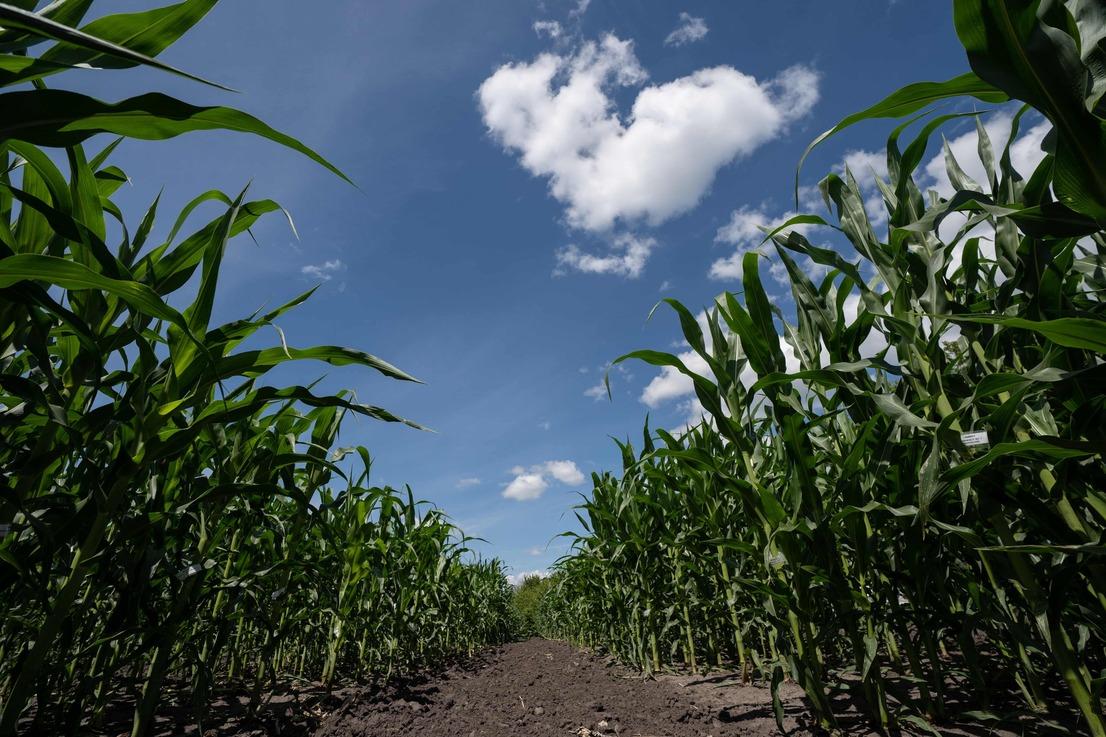
The right choice of corn hybrids
The head of VNIS is convinced that hybrids should be selected according to the growing season in accordance with the climate zones. The company creates universal hybrids that can compete in all climatic zones. Weather conditions vary more from year to year than climate zones do from one another. Today, the correct definition of zoning requires new research.
“We recommend that each grower conducts ongoing research on hybrids, and based on these results, choose a set of hybrids that will ensure high yields and stable grain production. Different vegetation periods of these hybrids will allow to extend both the sowing and harvesting process, as well as create a buffer under different environmental conditions,” said Myroslav Pariy.
The head of VNIS says that small farmers on 20 hectares can sow 2-3 hybrids, or even 1, but large farmers should grow different lines of hybrids and rely on the test data on a particular farm.
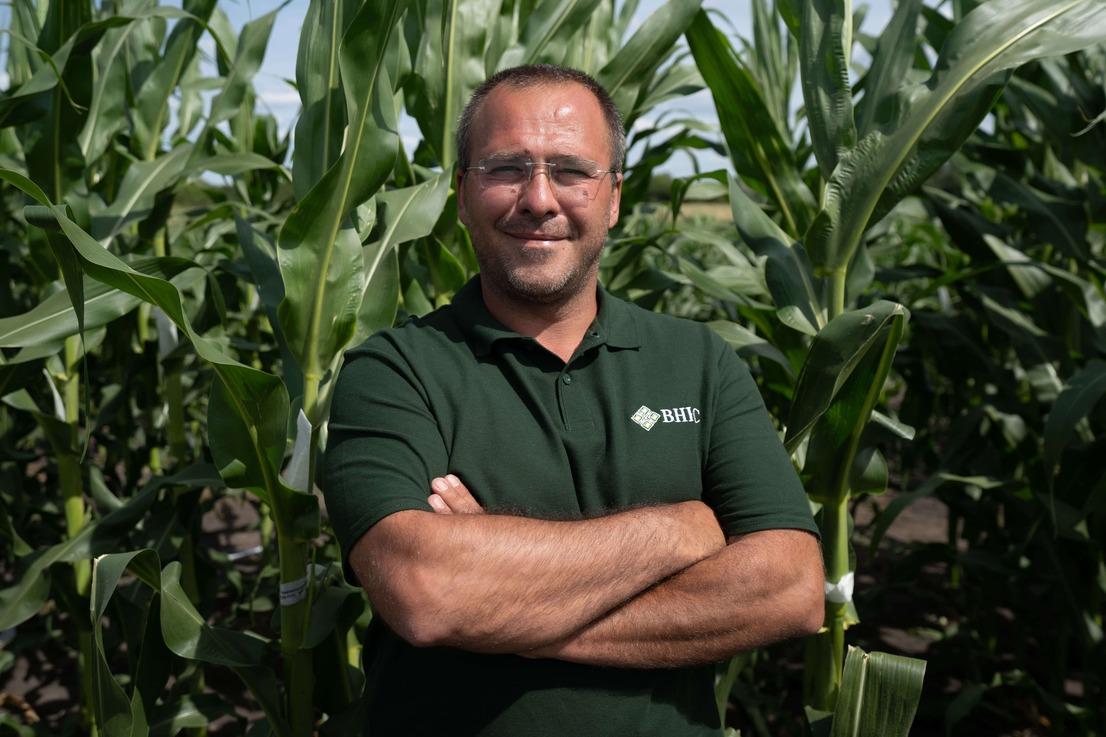
“To choose a hybrid with the right cultivation technology, first of all, you need to determine the yield that farmers expect, i.e., what is the economic efficiency of 1 t/ha, 5 t/ha or 12 t/ha,” said Volodymyr Skoryk, leading agronomist at VNIS, PhD in Agriculture.
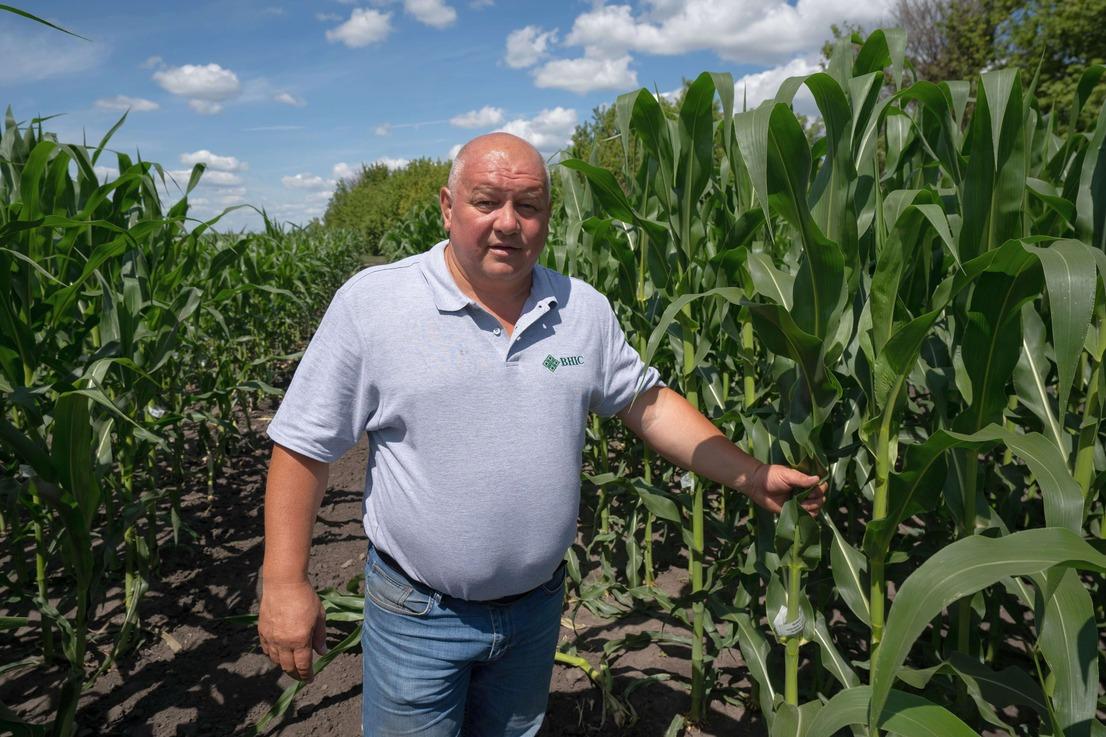
Myroslav Pariy also emphasized that farmers should pay attention to companies with a shorter history that have launched new corn breeding programs.
“You should not focus entirely on hybrids of one company, because they often have a related origin and the appearance of a certain epiphytotic disease can lead to the defeat of hybrids of close plasm, so it is worth having a set of different origins,” said Mr. Pariy.
What features of corn hybrids should we pay attention to?
One of the main areas of corn breeding is grain. Most breeding processes focus on the productivity of the crop, not on the quality characteristics of the grain.
“Over time, the specialization of crop hybrids will come. Today, they are already starting to introduce vax hybrids with modified starch and corn for oil, which is on the shelves of our stores. But this is all closely linked to the finished product market: if there is demand, there will be supply,” Mr. Pariy predicted.
According to Mr. Pariy, in two years VNIS will introduce a line of vaxi corn hybrids.
In industrial production, the primary role is played by yield as a complex trait and moisture yield of grain, because these two components form the cost of production.
“A corn plant is a living organism, and the more adaptable it is to stress, the lower its yield potential. But there is no such thing as a hybrid that is both high-yielding and stable, and resistant to drought or frost,” says Myroslav Pariy.
VNIS is now focused on breeding hybrids that are characterized by a stable level of yield under different conditions. They are grown at 8 research sites in different climatic zones of Ukraine. The portfolio of the Ukrainian Scientific Institute of Breeding for Agrarians includes 9 highly productive, intensive, and stable hybrids for grain, silage, and biogas.
“There are hybrids that can withstand drought with less yield losses, but we cannot say that they are absolutely drought-resistant. The root system of the plant plays a big role in drought resistance, so those hybrids that have fast rates of its development in the initial stages suffer less,” said Volodymyr Skoryk, leading agronomist at VNIS.
The candidate of agricultural sciences noted that the right choice of corn hybrid also depends on the needs of production - growing for silage, fodder or grain as part of concentrated feed.
“If you plan to grow corn for silage, you need to choose a hybrid with a long growing season, wide leaves, and a large, long stem to get the maximum amount of green mass. Such hybrids in our portfolio are Amarok 290 and Amarok 300, Tesla,” said Volodymyr Skoryk.
Last year, with a humidity of 17.2%, farmers in Kovylne village, Kherson region, had a yield of 13.1 t/ha of Tesla hybrid grain, and in Nastasiv village, Ternopil region, farmers got a yield of 12.9 t/ha of Tesla hybrid crops.
For stubble crops, the leading agronomist of VNIS recommended hybrids with a short FAO Gran 220 (FAO 210) and Gran 310 (FAO 250).
Today, VNIS work is organized in our country and in Chile. The difference in weather conditions helps to speed up the breeding process and allows us to test 2 generations of corn during the year.
Features of hybrid selection according to FAO
FAO is a complex indicator that characterizes the rate of development of a particular variety depending on environmental conditions, and is an important criterion for choosing a hybrid, as it provides an objective characterization of corn not only during final maturation, but also during the critical phases of vegetation.
“FAO helps farmers to choose corn so that weather conditions do not coincide with critical periods of the plant's vegetation; to predict what measures to take during the growth and development of the crop on the field. There is a clear pattern between hybrid yield and FAO in the absence of critical periods during the formation of generative organs and flowering: the lower the FAO, the lower the yield, and vice versa,” said Myroslav Pariy.
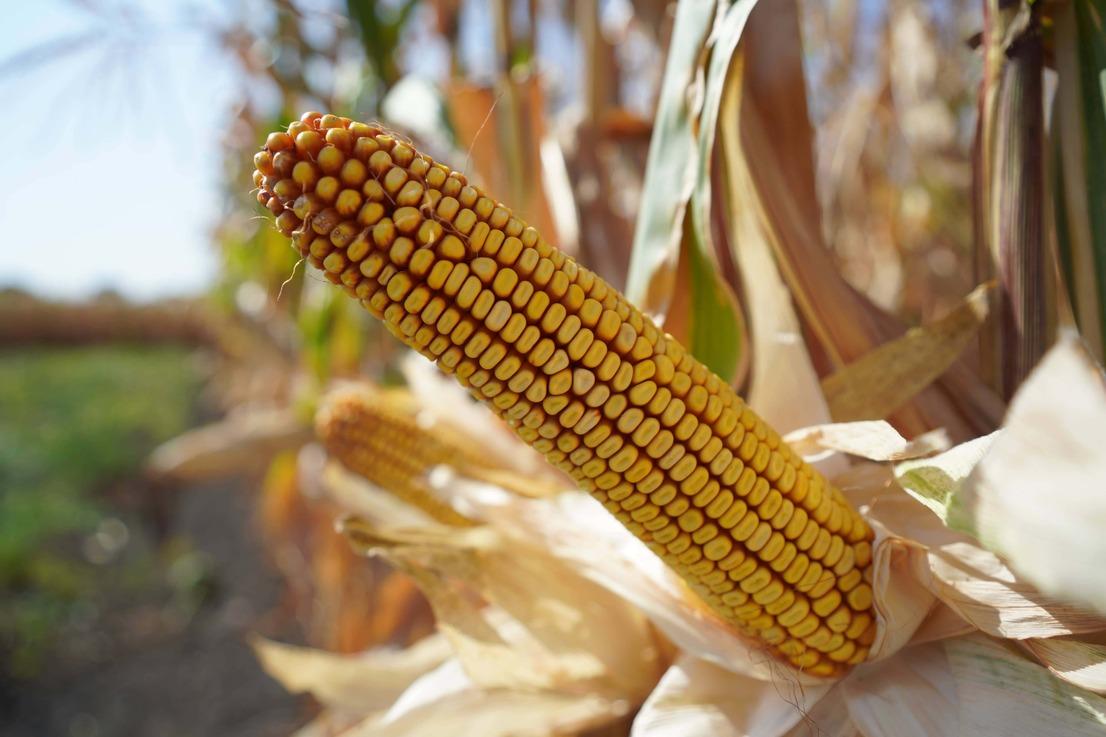
Myroslav noted that, for example, in the North Caucasus and Chechnya, corn-growing regions where hybrids with FAO 500-700 were grown in Soviet times, farmers there have recently been choosing FAO 300 and below, as climate change has led to drought and rising temperatures. When corn plants with FAO 550-600 enter the flowering and seed setting phase, this is when the highest temperatures are recorded in the area, which negatively affects the harvest.
Last year, at 7 of the 8 VNIS experimental stations, early corn hybrids performed better and yielded more, as there were atypical weather conditions that caused late hybrids to hit critical periods. Although, as the head of the research institute noted, usually in Ukraine, hybrids with FAO 300-340 perform best, taking into account average ten-day weather conditions and average annual temperatures.
“We sent a hybrid with FAO 500 to Chernihiv and Sumy regions for testing, and the crops gave a good result, they managed to ripen. Although local farmers demand FAO 200. Our climate has changed a lot, there is a drought in neighboring Belarus, and they are starting to grow sunflower there, so we need to take this into account,” Mr. Myroslav summarized.
Typically, early hybrids are grown in the north, and late hybrids in the south. VNIS presents hybrids with FAO 180-370 on the market, and now breeders have started working on hybrids with FAO 140.
Breeding material and growing technology
According to the head of VNIS, some corn hybrids can be sown in the early stages of sowing, which will optimize the growing technology.
“I am not a supporter of one sustainable corn growing technology, because plants are living organisms and, according to the environmental conditions, farmers must decide on the measures to be taken on the field. When an agronomist analyzes the weather conditions, the situation with pests on the field and knows the hybrid, he can adjust the technology of growing the crop accordingly,” says Myroslav Pariy.
According to the head of VNIS, stable hybrids are more resistant to stress than high-yielding ones, which require careful execution of all agricultural operations.
“Among our hybrids, we distinguish 3 main high-yielding stable hybrids with average FAO: VN 63 (FAO 280), Gran 6 (FAO 300) and Tesla (FAO 350). VN 63 is suitable for cultivation in all zones, both with intensive and minimum tillage technologies, and has an increased tolerance to dry conditions. Gran 6 is a plastic grain hybrid that remains stable under different growing conditions and has a fast moisture release. Tesla is a dual-use hybrid and is characterized by high drought tolerance,” said the head of VNIS.
Volodymyr Skoryk, leading agronomist at VNIS, added that Tesla, VN 63 and Gran 6 are stable hybrids that react less to stress factors. They are resistant to early sowing (they can be sown at temperatures 2-3℃ lower than high-performance hybrids), frost and dry conditions. The company's hybrids are also resistant to high temperatures. For example, Amarok 290 can even effectively use moisture for grain formation at high temperatures during the flowering period.
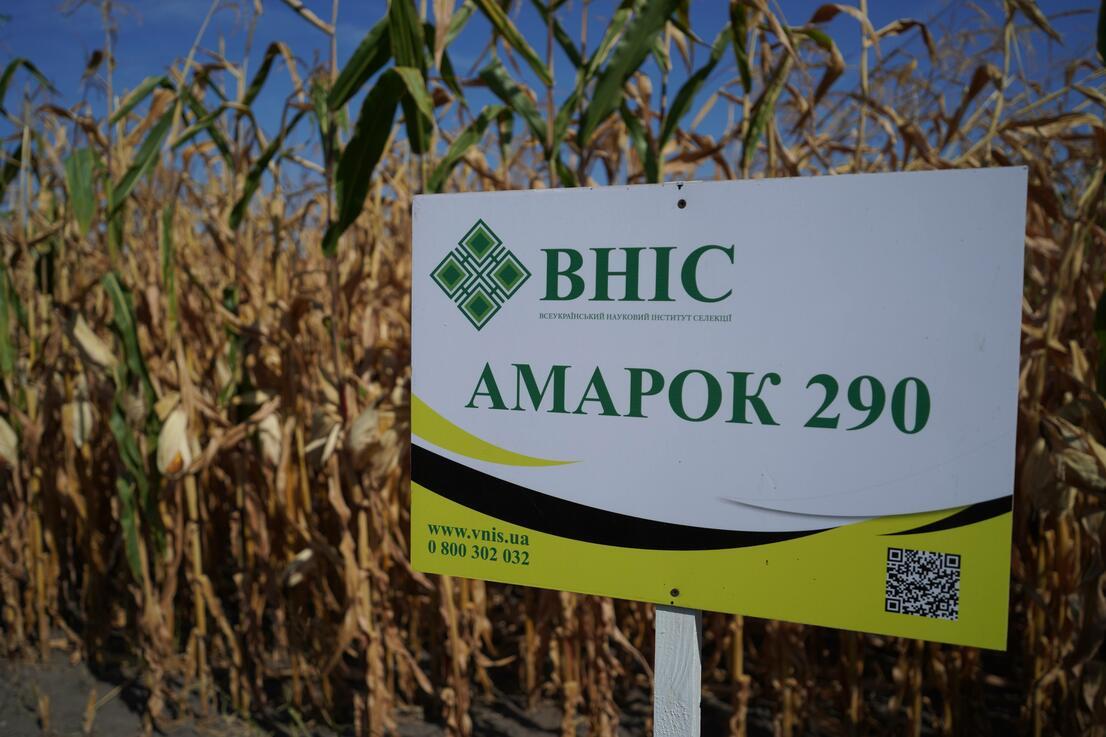
The companies note that agronomists should set goals and understand what they can do to maximize the result.
“If agrarians want 15 t/ha of corn, but do not apply anything to the field and do not perform basic techniques, then it is useless to expect such a result, no matter what kind of hybrid is used. If, on the contrary, agronomists follow the technology of crop cultivation, soil preparation and tillage, and use a hybrid that is tailored to the farm's capabilities, the harvest will be appropriate,” said Volodymyr Skoryk.
Trends in breeding development
VNIS emphasizes the selection of hybrids with high, stable yields and good moisture retention, which is what the market demands and is economically justified. The work of the company's breeders is aimed at creating and introducing new varieties and hybrids using modern achievements in breeding, biotechnology and genetic engineering. Myroslav Pariy noted that they focus on breeding more specific hybrids.
“Today, there are genetic technologies that allow us to directly increase corn yields using one procedure without additional investments, which is what we are striving for. We are also developing in the selection of vax (amylose) corn and waxy corn with a high percentage of amylopectin, which are of interest to starch producers,” said Myroslav Pariy.
Creating a modern adapted hybrid that exceeds the existing ones in terms of yield is a task that is currently being solved not only by breeders, but also by geneticists, molecular biologists and biotechnologists.
The head of VNIS added that the potential of corn as a species in classical breeding has reached a plateau phase and increasing yields through classical approaches may become economically unjustified.
“In our opinion, we need to move not to increase the potential yield, but to reduce potential losses from pests. Therefore, we are strengthening the classical criteria, such as disease and stress resistance, which together affect yields. We pay special attention to the resistance of corn hybrids to diabetes and herbicide resistance,” said Sergiy Galushchenko, head of the corn breeding department at VNIS.
The company notes a tendency to increase corn photosynthesis and the interaction of the crop with microorganisms.

 Choose a country
Choose a country